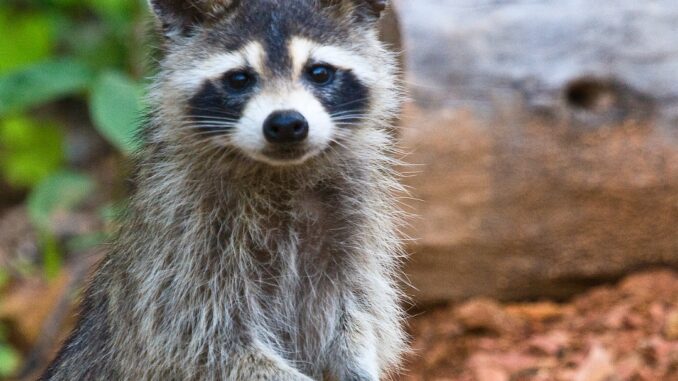
Ever wondered why raccoons sleep in the open? Well, it turns out that these clever and adaptable creatures have a unique approach to resting. Unlike many animals that seek shelter, raccoons often choose to sleep in the open, embracing the great outdoors as their nighttime haven.
By sleeping in the open, raccoons maintain a heightened awareness of their surroundings, making it easier for them to detect potential threats or sources of food. In this blog, we’ll delve deeper into the fascinating habits of raccoons and explore the reasons behind their unconventional choice of sleeping arrangements.
Table of Contents
Why Raccoons Sleep in the Open?
Heightened Awareness
- Raccoons love staying alert, even during sleep.
- Sleeping in the open helps them keep an eye out for potential dangers or tasty treats.
Survival Instincts
- Open spaces mean fewer surprise attacks and a better chance of escaping danger.
- Raccoons prefer a strategic approach to survival in their sleep choices.
Urban Adaptation
- Rooftops and parks become raccoon sleep sanctuaries in the city.
- Garbage bins are nearby, making it a convenient choice for urban raccoons.
Natural Environments
- Even in the wild, raccoons opt for open spaces.
- A preference for nature’s own bedrooms highlights their adaptability.
Why Raccoons Sleep in the Open During Day?
During the day, raccoons prefer secluded spots like tree hollows, dense foliage, or abandoned burrows for sleep. In urban areas, they may opt for attics or trees. These choices provide the raccoons with a sense of security and protection from predators, allowing them to conserve energy for their nocturnal activities.
Daytime Dwellings
| Habitat | Characteristics |
| Tree Hollows | Safe and elevated, away from predators |
| Rock Crevices | Natural hiding spots for a daytime nap |
Where Do Raccoons Sleep at Night?
Raccoons, whether in open spaces or dens, prioritize safety and security. During the night, they choose secluded spots like tree hollows, exhibiting a preference for locations that ensure heightened awareness and protection, mirroring their choice of dens during the day for a secure and comfortable rest.
However, it’s important to note that raccoons can pose a threat to pets at night, especially if left unattended, as they may become territorial and potentially engage in confrontations.
Nighttime Retreats
| Habitat | Characteristics |
| Open Spaces | Heightened awareness for quick escapes and food hunts |
| Dens | Safe and cozy spots for a good night’s sleep |
What To Do When You Spot a Raccoon Sleeping in Open
Encountering a raccoon peacefully napping in the open can be an enchanting experience. Here’s a guide on what to do when you come across these adaptable creatures enjoying a snooze:
- Avoid Disturbance: Raccoons, though seemingly cute, can be territorial and might react aggressively defensively if they feel threatened. Resist the temptation to wake them up or disturb their sleep.
- Capture the Moment Safely: If you want to capture the moment with a photo, use a zoom lens or the zoom function on your device. This way, you can maintain a safe distance while still enjoying the sight.
- Ensure Safety for Pets: If you have pets, especially during the night, be cautious, as raccoons can be potentially dangerous to them. Keep your pets indoors or supervise them to prevent any unexpected encounters.
- Contact Animal Control if Necessary: If the raccoon appears injured, sick, or in distress, it’s best to contact local animal control or wildlife rescue services. They can assess the situation and take appropriate action.
Remember, while raccoons may seem cute and cuddly, it’s important to prioritize their well-being and safety, as well as your own.
Frequently Asked Questions (FAQs) About Raccoon Sleeping Habits
Q1: Why do raccoons prefer sleeping in the open?
A: Raccoons choose to sleep in the open primarily for heightened awareness. This allows them to stay vigilant, detect potential threats or find food sources easily. Open spaces provide them with a strategic advantage for survival.
Q2: Do raccoons sleep differently in urban areas compared to natural environments?
A: Yes, raccoons exhibit urban adaptation in their sleep habits. In cities, rooftops and parks become their preferred sleep sanctuaries, often close to garbage bins for convenient food access. However, even in the wild, raccoons tend to opt for open spaces, showcasing their adaptability.
Q3: How does sleeping in the open contribute to raccoons’ survival instincts?
A: Open spaces contribute to the raccoons’ survival instincts by reducing the risk of surprise attacks. With a strategic approach, they enhance their chances of escaping danger, a crucial aspect of their survival in the wild.
Q4: How do raccoons sleep?
A: Raccoons are adaptable sleepers, known for their ability to rest in various positions and locations. When in trees, they might curl up on a branch or find a comfortable spot in a tree hollow. On the ground, they may create a makeshift nest using leaves or grass. Raccoons are also known for their daytime naps, and their flexibility allows them to adopt a range of sleeping postures, from curled-up balls to stretched-out positions.
Q5: When do raccoons sleep?
A: Raccoons are primarily nocturnal, meaning they are most active during the night. During the day, raccoons tend to find secure and secluded spots to sleep, such as tree hollows, dense foliage, or even abandoned burrows. However, they are adaptable and can adjust their sleep patterns based on their environment and availability of food. In urban areas, raccoons may also be observed taking short naps during the day in attics, crawl spaces, or other sheltered locations. Their sleep habits are influenced by factors such as weather conditions, the availability of food, and the presence of potential threats.
Conclusion
Raccoons, with their adaptable sleep choices, teach us that the open air isn’t just for stargazing. Whether navigating bustling cities or embracing the wild, these clever critters strategically choose where to rest, making every bedtime a lesson in survival and resourcefulness.
